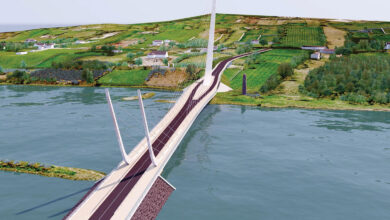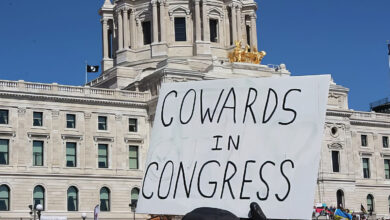25 years of the Northern Ireland Assembly

Although the Northern Ireland Assembly has spent almost 10 of its 25 years in suspension, there has been meaningful progress including the increase of female MLAs, and the formation of a formal opposition.
Although celebrations have been muted as the Assembly has been inactive now for more than one year, noteworthy is how the powers and functions of the Assembly have evolved in the years since the British Government restored local representation to Northern Ireland.
In 1998, the electorate, fresh from having passed the Belfast Agreement via a referendum, elected 108 MLAs, although the Assembly had a vastly different political composition to what it plays host to in 2023.
Originally formed with a five-party mandatory coalition and 108 MLAs, the nature of the Assembly has evolved since the original shadow period between 1998 and 1999, including the formal mechanism to create an official opposition, as well as the devolution of policing and justice powers in 2010.
Despite this degree of meaningful progress, Northern Ireland remains far from a typical western democracy, as can be exemplified by the fact that the Assembly has spent 10 of its 25 years without a functioning Executive.
Furthermore, the requirement for MLAs to designate as unionist, nationalist, or other remains a source of contention for a large section of MLAs, particularly the Alliance Party, which may not be able to nominate for the role of deputy First Minister if it were to find itself as the second largest party.
‘Shadow’ Assembly
The Assembly, in its current form, was established on 25 June 1998 under the terms of the Northern Ireland (Elections) Act 1998. It was called the ‘New Northern Ireland Assembly’ to distinguish it from the Northern Ireland Assembly for which legislative provision remained at that time under the Northern Ireland Constitution Act 1973.
The Northern Ireland Act 1998 stated that the Assembly would be known as the ‘New Northern Ireland Assembly’ in the pre-devolution or ‘shadow’ period and that at the date of devolution it would be called the Northern Ireland Assembly.
The Assembly operated as a ‘shadow Assembly’ until the British Government formally restored devolution to Northern Ireland as the Secretary of State introduced the Northern Ireland Act 1998 (Commencement Order No 5), resulting in the devolution of powers to the Northern Ireland Assembly from 2 December 1999.
Repeated collapse
Although devolution has been heralded as bring decision-making powers closer to the people of Northern Ireland, societal divisions have nonetheless manifested in the form of multiple collapses of the Assembly, including the current DUP boycott.
On 11 February 2000, following reports from the International Commission on Decommissioning that it had “received no information from the IRA as to when decommissioning will start”, the then-Secretary of State, Peter Mandelson, under powers derived from the Northern Ireland Act 2000, suspended the Executive and restored direct rule. An agreement was subsequently reached that allowed the restoration of devolution with effect from 30 May 2000.
On 8 October 2002, the Assembly debated a DUP motion expressing concern at the implications of a search of the Sinn Féin offices at Parliament Buildings on 4 October 2002 and the subsequent arrest of three Sinn Féin party members on spying charges. This led directly to another suspension of the Assembly on 14 October 2002.
Following the defenestration of the Ulster Unionist Party in the 2003 election and its usurpation by the DUP, the Assembly remained inoperative through the entirety of the 2003-2007 term, and the British Government continued direct rule.

Following the St Andrews Agreement in 2007, Ian Paisley and Martin McGuinness formed an Executive which remained functional for eight years. However, in 2015, following a PSNI assertion that the Provisional IRA had involvement in the killing of a Belfast republican, Paisley’s successor, Peter Robinson, utilised the vagaries of procedure to resign as First Minister without formally collapsing the institutions, by nominating a First Minister every seven days before immediately resigning.
In October 2015, following an assessment of paramilitary organisations commissioned by the UK Government, the DUP returned to its Executive posts, with Peter Robinson resuming his role as First Minister. At the same time, talks began around implementing the Stormont House Agreement.
Although the Executive was restored and reformed following the 2016 election, Martin McGuinness’s resignation in January 2017 over then-First Minister Arlene Foster’s refusal to temporarily step aside for the duration of an inquiry into the RHI scandal led to three years of Executive and Assembly collapse. Although the Assembly was re-established in January 2020 following the New Decade, New Approach agreement, the DUP collapsed it again in March 2022, in what it claims is a protest against the Northern Ireland Protocol.
Progress and the future
Although reform of the designation system is a favoured topic for many in Northern Ireland’s political classes, and is spearheaded by the Alliance Party, there is seemingly no immediate prospect of the designation system changing.
One bright spot has been the increase in the representation of women in the Assembly, with the first Assembly in 1998, comprised of 108 MLAs, only containing 14 women. Now, however, 35 out of the 90 MLAs are women, with one of the large parties, Sinn Féin, even containing a majority of female MLAs and a female leadership. Four of the five largest parties have had female leaders since the formation of the Assembly in 1998.
Although there is now a formal mechanism to form an official opposition in the Assembly, the fruits of this potential have yet to be realised due to the ongoing collapse. However, upon the future formation of an Executive, it is possible that the Assembly will come closer to resembling a normal western legislature.





